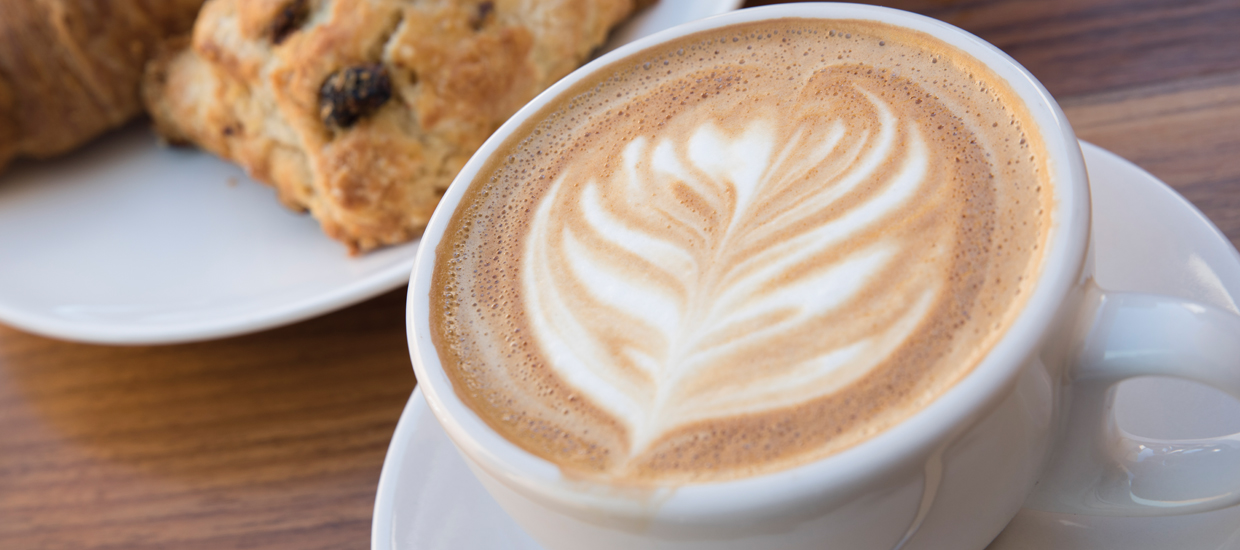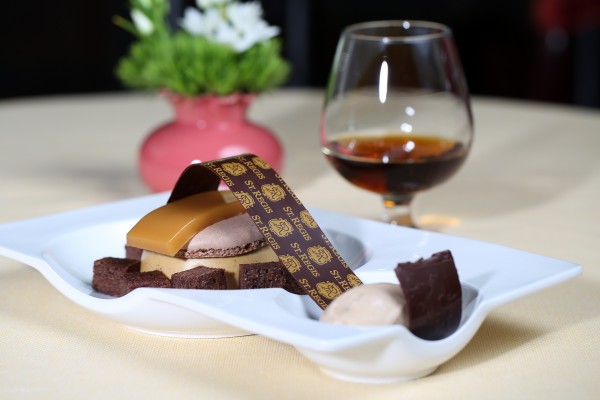Independent and artisanal purveyors are reviving the tradition of fine chocolate making in Puerto Rico.
By Neal Webster Turnage
It was the golden hour in Paris, that fleeting moment when daylight takes its last gasp and cobbled roads begin to shimmer with the reflection of the streetlights’ luminous glow. Nannette Rosa, vacationing in the city several years ago, had been motivated to step out for a stroll along its fabled avenues. As she traveled the boulevards, alleyways and side streets, she noticed shopkeepers begin to shutter their windows and lock their doors—except for one, who immediately captured her attention and imagination. He was a fastidious man wearing a single black glove, a dedicated craftsman who stood in his boutique’s window meticulously arranging exquisite chocolate truffles. Rosa, a high-energy motion picture unit production manager from San Juan, Puerto Rico, couldn’t have known it at time, but the man—renowned chocolatier Michel Richart—would inspire her substantially, redirecting the course of her life’s work and heralding the revival of fine chocolate making in Puerto Rico.
“It was many years later, after I had suffered an accident and was no longer able to keep up the pace required to work on films, that I had to reassess [my professional trajectory],” Rosa recalls. “My husband asked me what I thought I wanted to do. It was then I thought of Michel Richart—his black glove, his focus, his eye for detail.”
Mysteriously drawn to the art of crafting fine chocolate, she penned an impassioned letter and sent it to Richart in Paris. To her surprise and delight, he responded immediately. The two met, connected and decided to open a Richart-branded boutique, Richart Design et Chocolat, in the Condado neighborhood of San Juan.
That was more than five years ago. Since then, Richart has been joined by another distinguished local chocolate company, Antique Chocolates. Meanwhile, Chocolate Cortés, a long-established Puerto Rican and Dominican company with an 85-year history, has revamped its Puerto Rican division by cultivating local cacao trees and increasing production of its treasured byproducts, cocoa powder and chocolate. The combined efforts of these regional operations have managed to return gourmet Puerto Rican chocolate to its place on the culinary map.
Rich History
Christopher Columbus is credited with introducing chocolate to European nobility after taking cacao seeds back to Spain. So valued were the seeds at the time, they were used as currency in South America, where, along with Central America, cacao is believed to have first been cultivated. Some 20 years later, explorer Hernán Cortés began to capitalize upon the seeds’ commercial value. Not long after, Europeans settlers started to cultivate cacao trees as they systematically colonized areas of the Caribbean. Puerto Rico, which literally translates into English as “Rich Port,” undoubtedly shared in the bounty.
Before sugar and coffee began to dominate local agriculture, cacao was harvested in Puerto Rico in Patillas, Mayagüez, Río Piedras, Loíza and Cabo Rojo during the first half of the 21st century. Today, wild-growing cacao trees are the only remnants of the area’s past.
Ignacio Cortés-Gelpí, president of Chocolate Cortés, believes the time is right for a comeback. With cocoa prices steadily rising and a possible shortage of the beans widely reported in the media, he views Puerto Rican cacao as a niche speciality crop.
“The soil and climate conditions here for growing cacao are excellent,” he explains. “Yet production costs [due to labor and electricity] are higher than in other producing countries. So, we have to compensate for those higher costs, develop farms that guarantee higher production yields per tree and added value to end users.”
“We currently have a pilot project in place with select Puerto Rican farmers to develop farms within that concept,” he continues. Farmers assume the risks, but Chocolate Cortés provides the hands-on technical and training assistance (with help from the U.S. Department of Agriculture’s Tropical Agriculture Research Station in Mayagüez) needed to produce higher yields. It takes approximately five years for trees to produce the fruit used to make cocoa powder, and peak production occurs between 10 and 20 years of age. With trees in the Dominican Republic and other prime growing regions nearing 50 years of age—and Puerto Rico searching for ways to improve its economy—farmers and industry experts can’t help but see the potential opportunity in reestablishing Puerto Rico’s stake in cocoa production.
Go Local
Manuel Fernandez is just one of the many people committed to hastening Puerto Rico’s future in cocoa production. Three years ago, the founder of Antique Chocolates was working as an information technology consultant when, during a moment of clarity, he was propelled to experiment with Puerto Rican chocolate by combining it with other local products.
“[My wife and I] realized people here are crazy about chocolate and local Puerto Rican favorites like guava, coconut, coffee and passion fruit,” Fernandez says. But the couple’s real awakening occurred after several shopping trips to nearby markets. “The only thing[s] available were [retail giant] brands, maybe Snickers or Godiva,” he explains. “They do not produce chocolates with Puerto Rico in mind.”
From that epiphany, Fernandez launched his own business, a Puerto Rico-centric chocolate company designed to appeal to palates through chocolate truffles filled with locally sourced ingredients. As much as possible, Fernandez culls cocoa from local sources and forges relationships with nearby coffee and fruit farmers to source other raw products. He has settled into an operational space in San Juan and enlists his wife, an accountant, to helm the company’s marketing division.
The couple has taken an artisanal approach to chocolate making from the beginning. Fernandez believes the public is often misled by other island chocolatiers, who, he attests, have their chocolates produced in Europe or elsewhere before having them shipped in refrigerated containers to Puerto Rico and sold as Puerto Rican chocolates.
“We prepare our pieces each week for delivery and consumption within hours or days—fresh,” he explains of Antique Chocolates. A box of a dozen truffles from Antique Chocolates even arrives in packaging evocative of the company’s name: a picture of a colonial-era San Juan door inviting people in for a taste of a locally harvested and produced delicacy.
Rosa, on the other hand, proudly embraces Richart’s European origin. But in her estimation, that’s part of the charm. “We call ourselves a little bit of Paris in Puerto Rico,” she says.
Still, she presides over her own black glove chocolate tastings, both for local Puerto Rican chocolate connoisseurs and visitors alike. It’s a transcendent, heady affair, a sort of chocolate seance where those gathered around the crimson-clothed table in the Richart boutique are encouraged to close their eyes, inhale the fragrance of the chocolate and go from there. The experience includes placing the chocolate near the ear to listen to the crunch that follows Rosa’s command to break it, then sensually allowing it to linger on the tongue while enjoying its various flavor notes. It’s almost anticlimactic when fine Champagne and rum (referred to by Rosa as “the cognac of the Caribbean”) are introduced into the ceremony. The beverages are accessories that highlight her particular passion project: a collection produced in collaboration with one of the island’s premier luxury rum brands, Don Q Rum.
“I felt a little like Columbus when I approached the company with the idea,” Rosa admits. “But they trusted me and together we developed a vision for replacing the ‘rum and Coke’ association with a more rarefied product that capitalized on Puerto Rico’s history of cocoa and rum.” The result is a luxurious box of four chocolates, both dark and milk, with opulent gold-embossed logos and flavor notes that range from floral to citrus to downright exotic.
Moving Forward
“My hope is that we can build a sustainable niche industry,” Cortés-Gelpí says of the future of Puerto Rican chocolate. “Our [company’s] aim is to support the farmers in the program to be able to produce a quality product that can command a high premium.” The result of the program, he believes, is even more commercially viable chocolate products combined with world-class quality standards.
While the movement has been undeniably challenged by certain obstacles, including competition with long-established brands, there are signs of progress. Rosa’s boutique in Condado is a truffle’s throw from the outposts of retail giants like Gucci and Prada, well within reach of local and visiting luxury shoppers. Fernandez, who began selling his Antique Chocolates from specialty storefronts, is now featured in the island’s most coveted culinary boutiques such as Kasalta in Condado and Bottles in Guaynabo. Antique Chocolates, meanwhile, continues to develop its profile by attending key culinary shows in New York and San Francisco and ships its gourmet products internationally to accommodate offshore clients.
Chocolate Cortés recently opened its own shop, Casa Cortés ChocoBar in Old San Juan, which blends fine chocolate and fine art. It’s situated in the same area as Café Cuatro Sombras, a local favorite whose owner has accomplished for island coffee what Cortés-Gelpí hopes to achieve with cacao. The ChocoBar is a full-blown cafe that serves breakfast, lunch, dinner and tapas. Cortés-Gelpí delights in mentioning that the cafe’s interior artwork elevates a menu developed by a European chocolatier. “Each dish and drink contains, to some degree, Cortés chocolate as an ingredient,” he adds.
One could say that chocolate production in Puerto Rico has become the most delicious of competitions—but that’s not necessarily a bad thing. In the minds of the region’s artisanal purveyors, it serves to restore the island to its former status as a major cacao grower and a capital of fine chocolate making.











